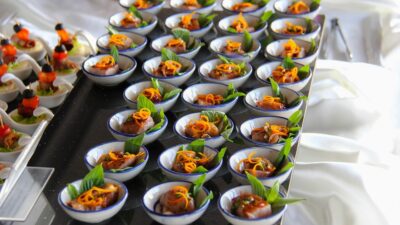In the realm of culinary arts, presentation is nearly as important as taste. The way food is plated can elevate a simple dish into a breathtaking experience. The concept of "The Geometry of Food" offers chefs and home cooks alike a unique framework through which to redesign and enhance their plating techniques. By understanding shapes, symmetry, and spatial relationships, we can create visually appealing plates that delight the eye and stimulate the palate.
The Basics of Geometry in Food Presentation
Shapes: The Building Blocks of Plating
Every dish contains basic geometric shapes—circles, squares, triangles, and more. These shapes play a crucial role in how a dish is perceived. For example:
-
Circles: Often associated with unity and balance, circular shapes can evoke a sense of harmony. Think of a perfectly round scoop of mashed potatoes or a ring of vegetables around the main protein.
-
Squares and Rectangles: These shapes convey stability and order, making them ideal for structured dishes. Consider a rectangular slice of cake or neatly arranged asparagus stalks.
- Triangles: These dynamic shapes can create a sense of movement and energy. A triangular slice of pie, for instance, leads the viewer’s eye towards the point, drawing attention and creating a focal point.
Symmetry vs. Asymmetry
Symmetry is the classic approach to plating, where elements are evenly balanced on the plate. This method is pleasing to the eye and creates a sense of calm. However, asymmetrical plating has grown in popularity, allowing for more creativity and dynamism. By distributing elements unevenly, you can create an organic, natural feel that often resonates well with modern dining aesthetics.
Height and Layering
Incorporating height into a dish can transform a flat plate into something more engaging. Layering ingredients—such as stacking vegetables or using a tortilla chip to add height to salsa—adds dimension and creates a visual hierarchy. A dish that boasts height invites curiosity, encouraging diners to interact with it in new ways.
Color Theory: The Geometry of Visual Appeal
Colors are another geometric dimension of plating. The colors of various ingredients and how they interact can drastically affect the presentation.
-
Contrast: Pairing dark and light colors, such as roasted beets with a dollop of creamy goat cheese, can draw the eye to specific areas, creating a focal point.
-
Harmony: Using analogous colors (colors next to each other on the color wheel) can provide a soothing visual effect while showcasing a limited palette of ingredients.
- Saturation: Different saturation levels can add depth and interest. Bright, saturated colors can capture attention, while muted tones can provide balance and contrast.
Textures: The Third Dimension
Texture adds another layer to the geometry of food. Combining different textures—crunchy, creamy, chewy—can elevate a dish, making it more interesting both visually and in terms of mouthfeel. Think of a delicate foam next to a crunchy piece of fried shallot; these contrasts provide a sensory experience that invites diners to explore each bite.
The Role of the Plate
The choice of plate can also influence the geometric composition of a dish. White plates often provide a blank canvas, allowing food colors to shine. However, textured, patterned, or colored plates can add another layer of complexity. The geometry of the plate itself—round, square, or oval—interacts with how the food is positioned, further shaping the overall presentation.
Practical Tips for Mastering Food Geometry
-
Plan Your Design: Before you begin plating, visualize how you want the final dish to look. Consider the shapes of your ingredients and where each element will reside on the plate.
-
Use Ring Molds: Ring molds can help create uniform shapes for components like grains, purées, or even salads, ensuring that your plated dish has a clean, structured look.
-
Practice Asymmetry: Don’t be afraid to break the mold. Using odd numbers of elements, or arranging items in an unbalanced manner, can yield striking results.
-
Incorporate Garnishes with Purpose: Garnishes should add to the dish, not distract from it. Consider using geometric garnishes—like microgreens arranged in a triangular formation—to reinforce the overall design.
- Reflect on the Dining Experience: Ultimately, think about how the presentation impacts the dining experience. Aim for a beautiful plate that intrigues the diner while ensuring that the flavors remain the star of the show.
Conclusion
The geometry of food is a fascinating lens through which to view culinary arts. By mastering the shapes, colors, textures, and arrangements on a plate, one has the power to transform a meal into a feast for the senses. Whether you are a professional chef or an enthusiastic home cook, understanding these principles can help you create dishes that are not only delicious but also visually stunning. So go ahead, grab your favorite ingredients, and experiment with the geometry of food—your guests will thank you!



